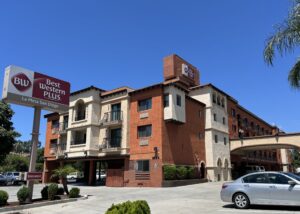California Development Could Taper Amid Rising Costs
California Development Could Taper Amid Rising Costs
HotelNewsNow
01/18/19
California Development Could Taper Amid Rising Costs
The number of new hotels opening in California is expected to remain steady for the next few years, but increasing costs in construction and labor, among other challenges, will likely lead to an eventual slowdown, according to a survey.
By Bryan Wroten
http://www.hotelnewsnow.com/Articles/292370/California-development-could-taper-amid-rising-costs
REPORT FROM THE U.S.—The number of new hotel openings in 2018 in California was down compared to the record-high openings in 2017, but should rebound in 2019 and potentially 2020, a survey by Atlas Hospitality Group shows.
The 2018 California Hotel Development Survey by Atlas Hospitality Group reports 52 hotels opened in California last year, down 21% from 66 in 2017. The number of new rooms opened also decreased, falling 39% from 10,793 in 2017 to 6,592 in 2018.
The slowdown in openings in 2018 was expected, and is in no way an indicator that people are pulling back from developing in California, said Alan Reay, president of Atlas Hospitality Group.
Looking at projects under development in the state now indicates 2019 and 2020 would be closer in pace to 2017, he said. There are currently 203 hotels with 29,114 rooms under construction, a 37% increase in room count over 2017, according to the survey. There are 1,066 hotels with 148,215 reported rooms in various stages of planning, a 19% room count increase over 2017.
All of this adds up to a robust amount of new supply in 2019 and 2020, Reay said, but “then we see a sharp drop off in 2021.”
Several issues have come to the forefront in the last six to nine months pertaining to hotel development that have intensified the challenges in the state, he said. These include “skyrocketing construction costs,” complicated by increasing labor costs; tariffs that affect furniture prices; and recent wildfires that affected the availability and cost of lumber, he said.
“We are starting to see some clients with sites tied up, some with nonrefundable money, walk away from those projects just because of the huge front-end construction cost,” he said. “Those already under construction and financed, those will get built.”
Also, projects in planning, unless they’re in very high-end areas such as along the coast or in the Los Angeles and San Francisco areas with major flags attached to them, will have difficulty getting financed, he said.
For many larger projects, main construction lenders are coming in at 50% to 55% of the capital stack, which can be a killer for developers, Reay said.
“They don’t have that kind of equity to put into the deal, or they don’t want to put it up,” he said.
Foreign money, such as EB-5 financing, has cooled off as foreign investors, particularly from China, are pulling back, he said.
Developer perspective
Analyzing new supply is a critical piece of the front-end evaluation of potential projects, said Corry Oakes, CEO and founder of OTO Development, which has the Hyatt Centric Mountain View and Hilton Garden Inn Sunnyvale scheduled to open this year.
“For a long time, some in the development community delivered new hotels without fully contemplating the long-term effects of supply growth,” he said. “If an area had new office buildings and restaurants, a hotel would just work. Those days are gone.”
Most financing sources are paying much closer attention to the supply data point, Oakes said, and the entitlement time periods and cost have expanded dramatically, especially in California. That creates both a risk and expense burden that is dramatically different than historical norms.
“Construction costs have exploded and timeframes have grown, he said. “All of these points increase the risk on new deals, and they make forecasting future economic results more difficult and more important.”
For a hotel to open in California today, that means someone decided at least three years ago to develop a hotel, RD Olson Development CEO Bob Olson said. He added there’s no doubt rising costs are having a big impact on hotel development.
Revenue per available room growth from 2010 to 2017 was strong, and the cost to develop mostly matched the RevPAR increase, which is ultimately the bottom line for the investment, Olson said. Now RevPAR growth has tapered, and there has been an increase in construction costs in part because of an overall higher demand for real estate construction, he said.
“That is the reality,” he said. “Today it’s hard for a group to decide that we’re going to be OK with this high basis, because I think what many developers learned in the last downturn is that development costs can drop 25% from the peak to trough.”
Anyone deciding to develop today needs to understand they could potentially end up with an investment with a basis significantly higher than what current replacement costs are, Olson said. Starting a project today means opening years from now, wherever the industry is in its cycle, he said. If the economy falls apart in that timeframe, developers may be left holding the bag.
It’s difficult to say “yes” to a project right now, he said, but his company is active in California with a few sites it considers irreplaceable real estate.
“We develop hotels to own them, to own for the long-term,” he said. “We do sell, but the reason we’re owning for the long-term is because if we’re going to develop something, we need to want to own it ourselves.”


